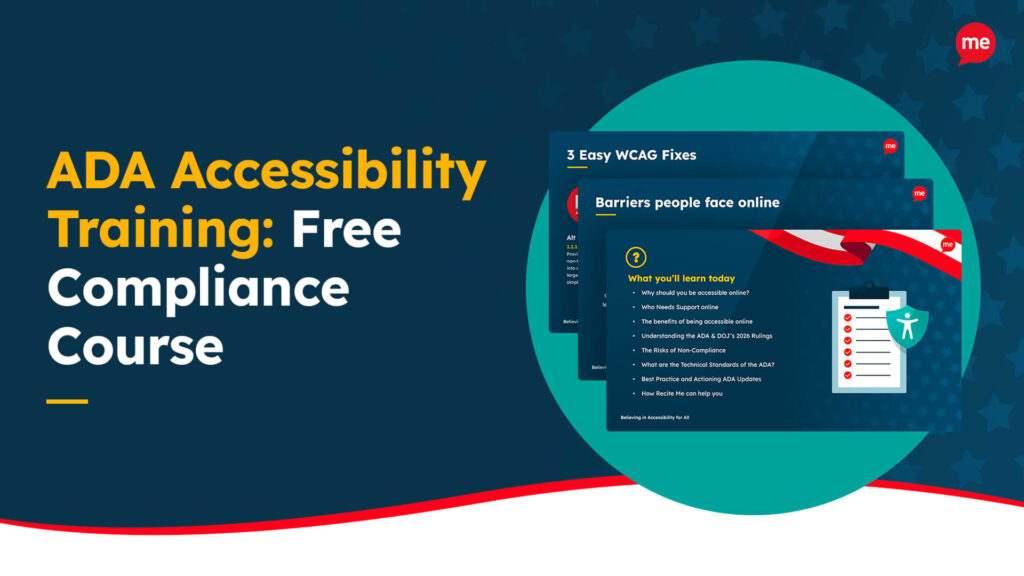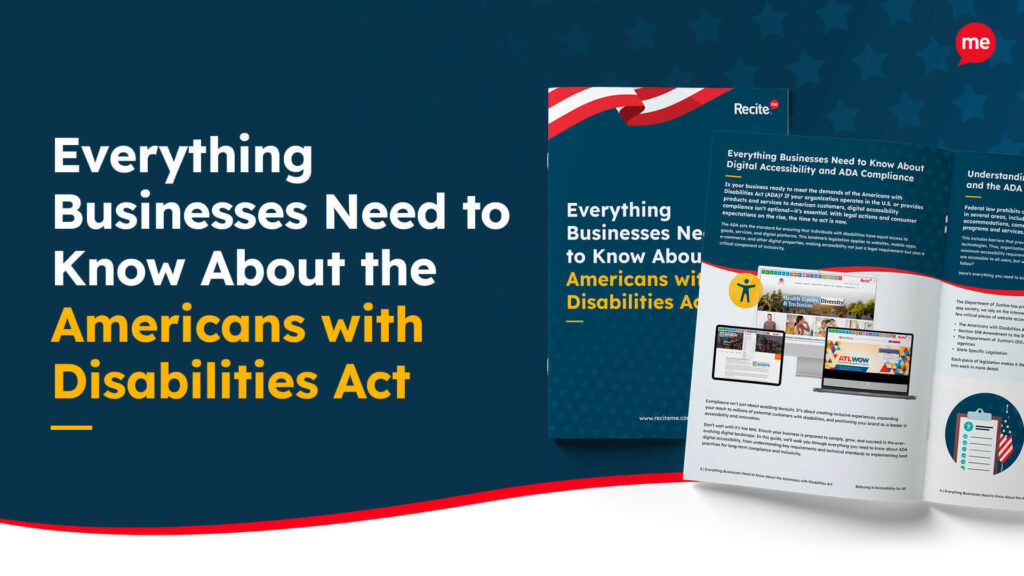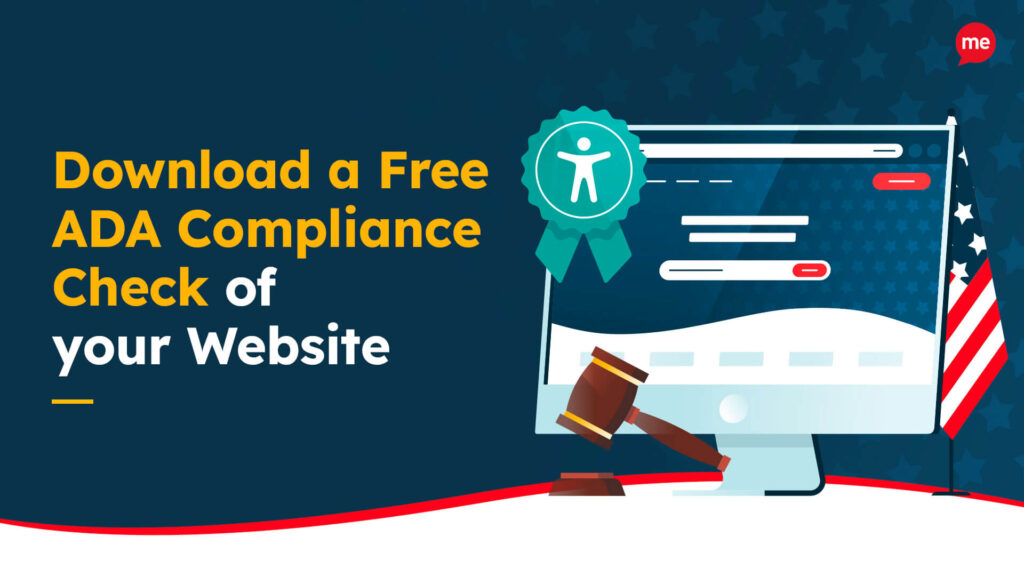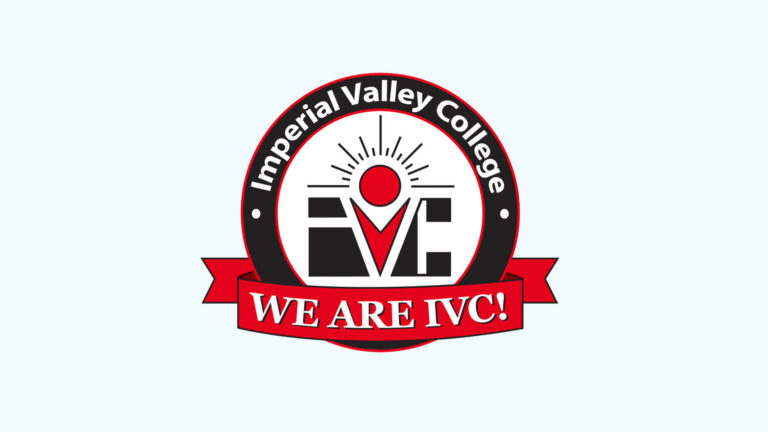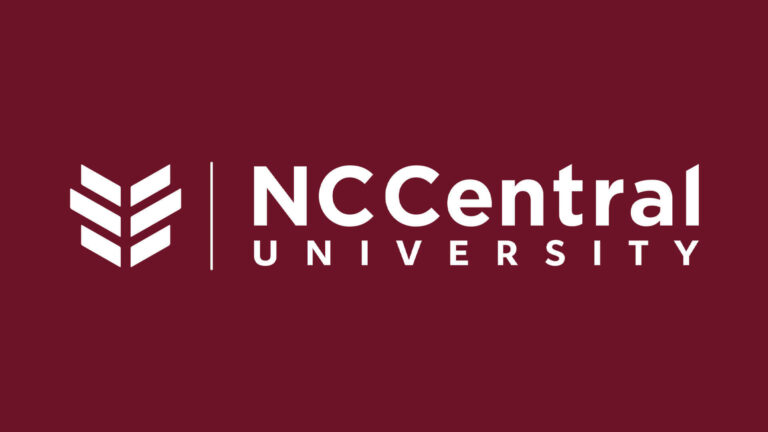Get A Free ADA Compliance Audit Of Your Website
Download NowThe Americans with Disabilities Act (ADA) is a crucial piece of legislation for any higher education institute. Influenced majorly by the Web Content Accessibility Guidelines (WCAG), it acts as a rule book for accessible website design. But complying with the ADA is not only about meeting legal requirements, it’s about paving the way for a fairer, more equitable society. After all, colleges and universities are the backbone of our communities, setting the foundations for our young people and their job prospects. This article acts as a guide to the ADA, laying out a clear path to accessibility for higher education institutes.
What is the Americans with Disabilities Act (ADA)?
The Americans with Disabilities Act (ADA) is a landmark civil rights law enacted in 1990. It essentially prohibits discrimination against individuals with disabilities in all areas of public life; this includes jobs, schools, transportation, and any other space that is open to the general public. The fundamental purpose of the ADA is to make sure that people with disabilities have the same rights and opportunities as everyone else.

The ADA is divided into five titles:
- Title I – Employment: Protects the rights of individuals with disabilities in the workplace.
- Title II – Public Services: Ensures that public services and programs, including those provided by state and local governments, are accessible to individuals with disabilities.
- Title III – Public Accommodations: Requires that any organization which provides goods or services to the public, including private businesses and non-profit service providers, be accessible to individuals with disabilities.
- Title IV – Telecommunications: Mandates accessible telecommunications services for individuals with hearing and speech disabilities.
- Title V – Miscellaneous Provisions: Contains various provisions relating to the ADA as a whole, including its relationship with other laws.
With regard to ADA compliance, higher education providers should be mostly concerned with Titles II and III, a large part of which is online accessibility.
Want to make sure your website is compliant with the Americans with Disabilities Act? Then unlock the ADA compliance checklist now. Discover actionable steps to ensure ADA compliance, helping you avoid lawsuits and any other negative consequences of non-compliance.
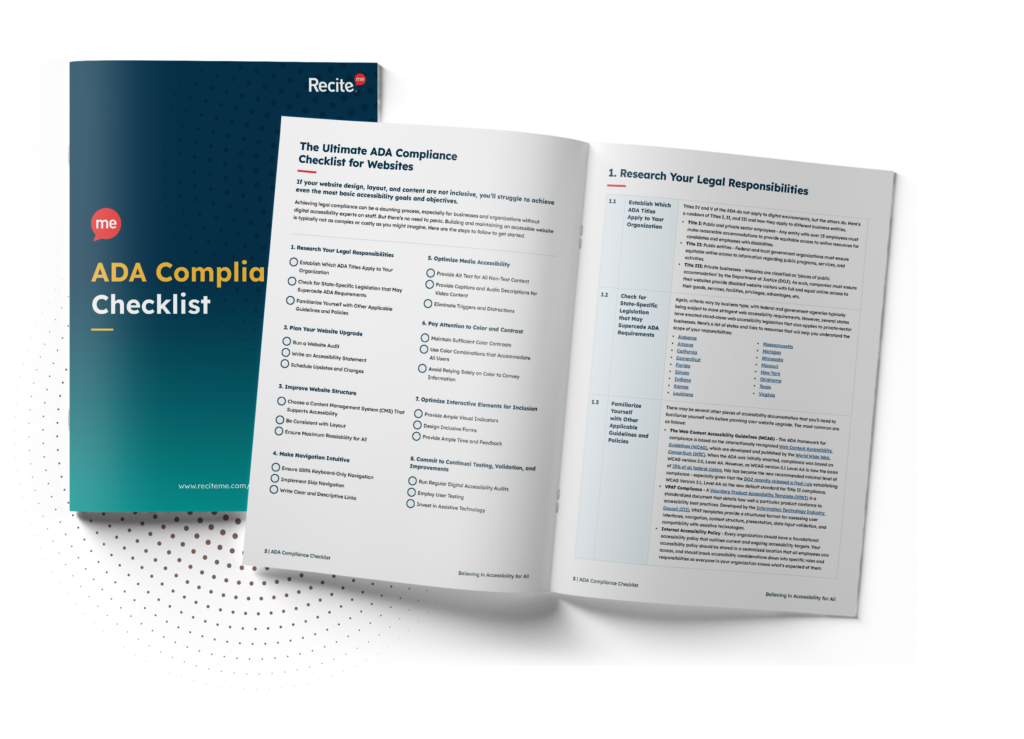
What do Higher Education providers need to do to become ADA compliant
For a higher education provider to comply with ADA, it is important to understand the ADA guidelines and how they apply to digital content. A large part of this means being familiar with the WCAG best practices – a set of standards set out by the World Wide Web Consortium (W3C), which act as the basis for everything online accessibility. Understanding these guidelines inside out will give you a significant advantage when it comes to ADA compliance.
Once familiar with WCAG levels and the requirements, conduct an accessibility audit to assess your current website for accessibility issues. This audit should include evaluating all web pages, multimedia content, and any interactive elements for areas of improvement. Tools, like Recite Me’s online accessibility checker, allow you to scan your website for inaccessible elements or elements which do not comply with WCAG. This is by far the simplest and most reliable way to conduct a thorough audit, as it puts the onus on the software to make a judgment call regarding accessibility.
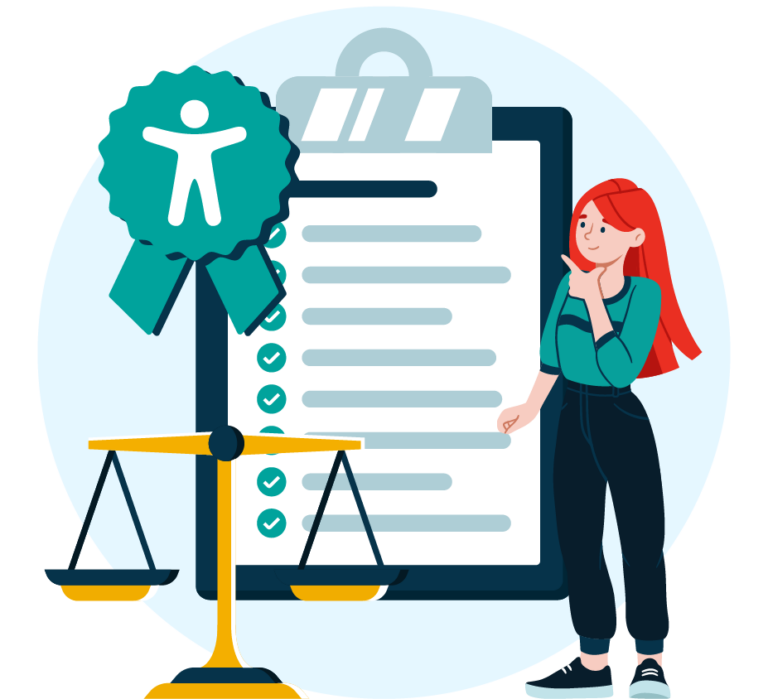
After identifying any issues, develop an accessibility plan. Your accessibility plan should list specific actions, timelines, responsibilities, and the resources needed to address the identified issues. Think of it as a roadmap for achieving your accessibility goals. The clearer your accessibility plan, the easier it is to begin implementing the changes. Implementing these changes could involve coding, modifications to your website’s design, content updates, and more. The next section outlines some classic changes you can make to improve your website’s accessibility, even if your accessibility plan is not fully developed yet.
Once any changes have been implemented, your website should be at least close to where you want it. But, the next challenge you have to overcome is maintaining this new and improved level of accessibility. This means you must train your staff, so that anyone at your institution involved in web development and content creation understands the accessibility requirements stipulated by ADA. Make sure that your staff continue to conduct regular accessibility audits, updating your website according to the outcome to ensure ongoing ADA compliance.
Actionable tips for ADA Compliant college websites
Now that you have a rough action plan in place, let’s zoom in and explore the precise changes you can implement today to make your college’s website more accessible.
Compatibility with Assistive Technologies
Many college students with disabilities rely on different types of assistive technologies to navigate the web. These include screen readers, voice recognition software, and alternative input devices. Ensuring your website and its content are compatible with such technologies is therefore crucial to accessibility.
Firstly, make sure you use proper HTML tags so that screen readers can interpret the content correctly; for example, using ‘<header>’ for headings instead of just styling text to look like headings. It is also important to label form fields appropriately, even if you think it is obvious, so that technologies can read the form. For example, you may put ‘<label for=”email”>Email Address</label>’ in the code for the email address field, making it obvious to screen readers which field is which. Once compatible, test your website regularly with popular assistive technologies to identify and address any issues.
Provide text equivalents
Visual content such as images, videos, and infographics should always have text equivalents. This is so that web users who are deaf or hard of hearing can still access your content.
Descriptive alt text for images should explain clearly and concisely what the image represents. The more descriptive, the better, although be careful not to confuse the user with an onslaught of words. As an example, good descriptive text for an image of a student studying might read: ‘student studying with a laptop in the library’. This is clear enough to depict what the image contains without going overboard. Other text equivalents, like transcripts and video captions, should be used in conjunction with image alt text for all-round accessibility.

Accessible color contrasts
Accessible color contrast is crucial for users with visual impairments, as it gives them the best chance possible at successfully digesting text-based content. Text and background color combinations should meet the minimum contrast ratio of 4.5:1; for example, using dark blue text on a white background. But do not rely solely on color to convey information. Use text or symbols in addition to color. For example, use text labels like “Required” in addition to red asterisks on mandatory form fields, rather than just coloring the field title in red.
You can learn more about the need for ADA-compliant colors here.
Clear navigation
A well-structured, easy-to-navigate website benefits all users and is a big part of achieving overall accessibility. Key to this is having a clear layout and navigation structure that is consistent across all pages. If, for example, the positioning of your menu bar is different on each and every page, users become frustrated and may not be able to find the pages they need.
Other ways to ensure clear navigation include the use of descriptive headings and breadcrumbs. Breadcrumb navigation helps the user understand exactly where within the site’s structure they are. For example, a student who finds themselves browsing your admissions page from a direct link on Google may see ‘Home > Admissions > Undergraduate’ at the top of the page, helping with any future navigation.
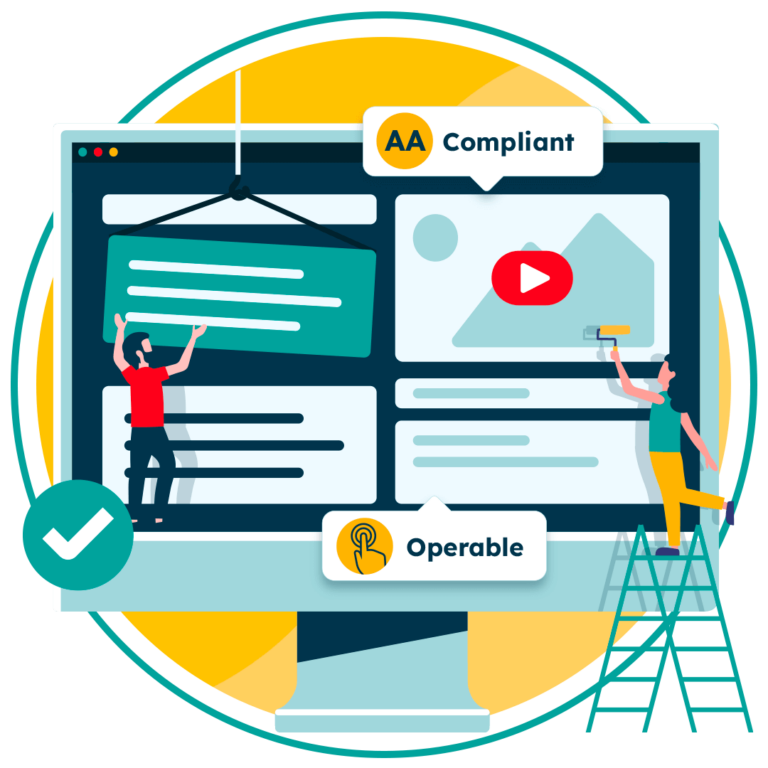
Accessible forms
Forms are a crucial part of many higher education websites, so ensuring they are accessible is essential. First, as previously discussed, all form fields should be clearly labeled with clear instructions on completing the form provided.
You should also ensure that clear, concise error messages are displayed when the user completes a field incorrectly. After the error message, precise instructions for correcting the mistake should be given; for example, showing “Please enter a valid email address” next to the email field if the input is entered without an ‘@’ symbol.
Finally, ensure that all form elements can be navigated using a keyboard. This means allowing users to tab through form fields and buttons without needing a mouse.
Descriptive links
Links on your website should be descriptive enough to be understood out of context. This means using meaningful link text that describes the destination, such as “Download the admissions brochure” instead of the generic “Click here”. As well as enhance screen reader compatibility, descriptive links provide extra context that makes for a simpler browsing experience for all users.
Accessible multimedia content
As a college, multimedia content probably features a lot on your website. That is because multimedia can significantly enhance the learning experience, as long as it is accessible to all users. Features, like synchronized captions and transcripts, can be added to recorded lectures to help students who are deaf or hard of hearing. Audio descriptions can be recorded over video content where necessary, narrating key visual elements to aid visually impaired users.
Another way to enhance multimedia accessibility is to provide controls that allow use of keyboard shortcuts for performing essential functions like play, pause, and volume control.
Get a free automated ADA compliance audit of your website. This audit will highlight compliance violations and provide the recommendations needed to meet ADA compliance standards.
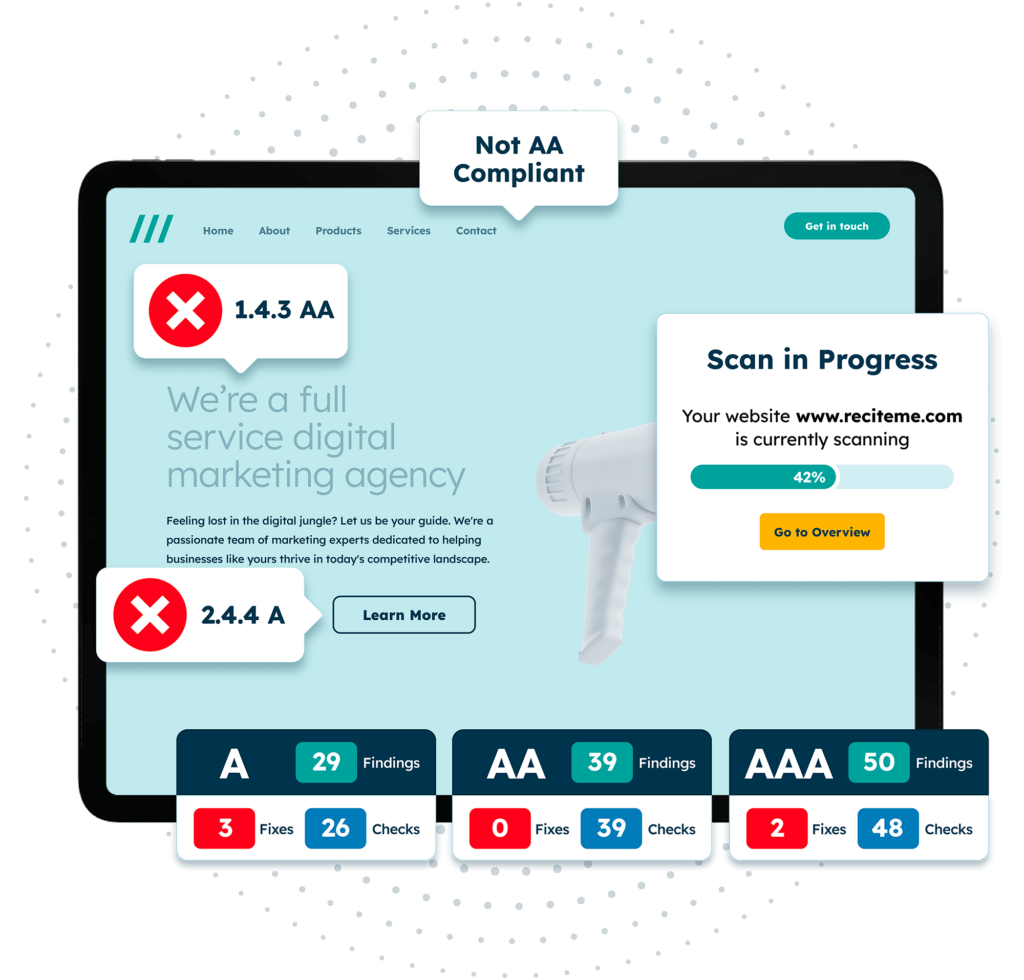
The risks of not complying with ADA Guidelines
Failing to comply with ADA guidelines can have significant consequences for higher education institutions. But beyond legal and financial repercussions, non-compliance can affect the institution’s reputation and student body diversity. This section unpacks the various risks in more detail.
Legal implications
The legal risks of non-compliance should be taken very seriously. Non-compliance can lead to substantial financial penalties and ADA web lawsuits, which, in themselves, can become very costly. There have been several cases in the U.S. of educational institutions facing legal action for inaccessible websites. Most notably, in 2015, a lawsuit was filed against Harvard University and MIT by the National Association of the Deaf (NAD) for failing to provide accurate captions for their online courses and educational materials.

Reputational damage
But while the legal risks can be costly, the reputational damage that comets with non-compliance can be much more long-lasting. A website that does not meet ADA standards signals to prospective students and donors that inclusion is not a priority, deterring people from wanting to be associated with your college. For instance, if word spreads that a college’s website is difficult to navigate for visually impaired students, it could deter prospective students from applying, including those who are not visually impaired but, rightfully, wish to study in an inclusive environment.
As an institution’s reputation becomes tarnished, it risks losing students, especially those with disabilities, who choose to attend other institutions that offer accessible websites and resources. Not only does this reduce one of your institution’s main sources of funds, but it shrinks the talent pool on which academia is so heavily reliant for progression in various fields of study.
Excluding students
Finally, non-compliance can lead to exclusion, where students with disabilities may be unable to access essential information and services. Excluding students impacts their chances of success, which is a complete failure on behalf of higher education institutes and their commitment to their students. For instance, if a visually impaired student cannot access lecture materials or contact support services via the website, their academic performance and overall college experience may suffer.
Are there differences in compliance requirements between Public and Private providers?
The short answer is, yes, but only slightly. While both public and private higher education providers must comply with ADA guidelines, the difference lies in the application of the titles. Public colleges and universities are required to comply with Title II of the ADA, which mandates that all programs and services, including websites, must be accessible to individuals with disabilities. On the other hand, private colleges and universities are subject to the requirements outlined in Title III of the ADA, which mandates public accommodations to be accessible. This includes ensuring that websites are accessible to students, faculty, and visitors with disabilities.
Despite this slight difference in application, the goal remains the same for both public and private providers: to provide an inclusive and accessible digital environment for all users.
The benefits of an ADA compliant college website for students
Ensuring your college website is ADA compliant carries with it a whole host of benefits that go beyond just legal compliance. This section outlines some of the most significant advantages for making a website more accessible:
- Equal access to information: All students, including those with disabilities, can access essential information about courses, admissions, financial aid, and more.
- Enhanced learning wxperience: Accessible multimedia content, such as captions and transcripts, means that learning opportunities are equal for all students.
- Inclusivity: ADA compliance demonstrates a commitment to inclusivity and diversity, which is an increasingly important factor for prospective students, donors, etc.
- Improved usability: Many accessibility improvements, such as clear navigation and descriptive links, enhance the overall usability of a website, not just for disabled users but for everyone.
- Legal compliance: By the very nature of complying with ADA, you avoid legal issues and potential lawsuits related to ADA non-compliance; the litigation costs of which can be very costly.
- Tax relief: Any expenditure that is used to become compliant could be eligible for ADA tax credits. Meaning that accessibility improvements can be a more cost effective strategy..

How to test a College or Higher Education website for ADA Compliance
Testing your website for ADA compliance is a crucial step in ensuring accessibility. After all, how can you decide where to go if you don’t know where you currently are?
The best way to do this is to use automated tools, such as Recite Me’s accessibility checker, which identifies non-compliant features and areas for improvement. Once tested with automated processes, it is highly recommended to conduct manual testing to catch issues that automated tools might miss. This includes checking color contrasts, keyboard navigation, and screen reader compatibility. Involving users with disabilities in this step is highly effective. Allow them to ‘break’ your website, search for issues, and provide relevant feedback. Their insights can be invaluable in identifying real-world accessibility barriers that individuals without disabilities may not be aware of.
By following this procedure, higher education providers can create ADA-compliant websites that simultaneously provide equal access to all students, fostering an inclusive and supportive learning environment.
Need more help becoming ADA compliant?
The following resources are packed full of actionable tips and expert advice for making your digital content compliant with the Americans with Disabilities Act:
Free ADA Accessibility Training
Take the first step to ADA compliance by completing our training course.
Free ADA Accessibility Guide
Ensure your organization is meeting the requirements for ADA compliance.

